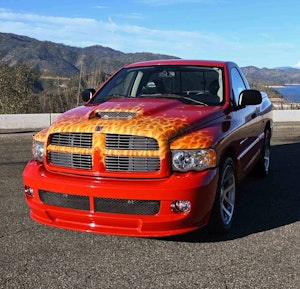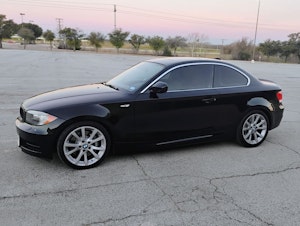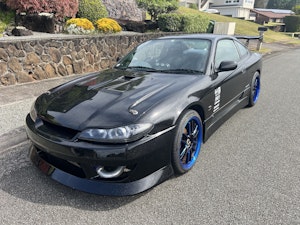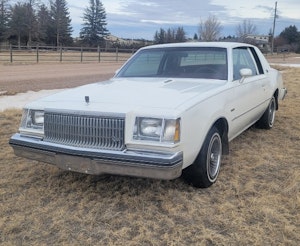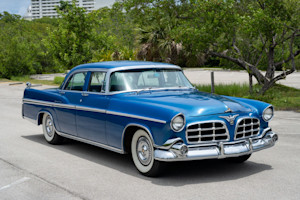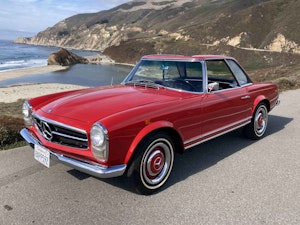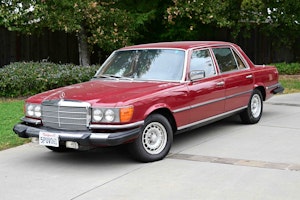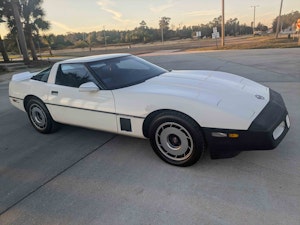Media | Articles
These 5 retro-themed motorcycles are a blast from the past
Old motorcycles are miniature works of art. They are also fussy to own and operate. Wonderfully mechanical and devoid of computers and CAD/CAM parts, they need us, unlike modern machinery. Why? They need our brains and brawn to even be started. Firing up an old bike requires an understanding of piston movements, compression strokes, top dead center, compression releases, the proper setting of a spark-advance lever, and a mastery of carburetor tickling, enriching, or choking. And, of course, the black art of kick-starting.
Once you’re under way on a classic bike, the handsome relationship between rider and machine continues, thanks to Rooster Cogburn–era, cable-operated drum brakes; pogo-stick suspension; and other dynamic dubiousness. Then there’s the aftermath: oil on the garage floor; mysterious electrical glitches; and the ongoing hunt for service parts and the intel to install them.
The alternative to this two-wheeled love/hate relationship? All-new retro bikes with design cues from the 1950s and ’60s, modernized with fuel injection, digitized ignitions, disc brakes, electric starting, multifunctional instrumentation, and better lighting and switchgear. Boomers can relive their best years without mechanical hassles, and old-soul millennials can experience a time they could otherwise never know.
20190805144428)
We’re crazy about bikes here at Hagerty, and we wanted to indulge in the moto-retro movement, so we chose five machines, from Harley-Davidson, Indian, Kawasaki, Royal Enfield, and Triumph. Displacements range from 648 cc to 1202 cc; price points from $6249 to $10,799; and styles from “standard” to “café racer” to “cruiser.” All have twin-cylinder, fuel-injected engines. The Kawasaki, the Royal Enfield, and the Triumph utilize a parallel-twin configuration; the two others, the Harley-Davidson and the Indian, are V-twin designs. The Kawasaki, the Royal Enfield, and the Harley are air-cooled; the Indian and the Triumph are liquid-cooled.
Marketplace
Buy and sell classics with confidence
And how the onboard experiences differ! We rode these bikes hard for three solid days, from gritty downtown Los Angeles, through rush-hour freeway traffic, and up through the bucolic mountains above Malibu.
There is nothing like such repeated exposure to help assemble, sort, filter, and solidify pertinent information about an array of machines. And assemble we did, switching between bikes frequently, running the city streets, freeways, and back roads forward, backward, and sideways until hell wouldn’t have it, collectively covering more than 1000 miles and exchanging impressions of these five retro bikes.
With such variations in machine type, displacement, and pricing, we didn’t intend to choose an absolute winner. We instead wanted to describe their nature so you could choose your own. Do us one favor, though: After reading about these motorcycles, let us know what you think (editor@hagerty.com), especially if you buy one.
Harley-Davidson Sportster Iron 1200
20190805144303)
Like Baloo the bear in Kipling’s The Jungle Book, the Harley jitterbugs and galumphs through the urban wilds to its own tune. The big 1.2-liter V-twin’s cylinders are splayed a mere 45 degrees, mimicking the look of the Motor Company’s first V-twin of 1909. It’s an iconic design but unfortunately causes the bike to shake like an atomic-powered dirt compactor. Every bit of the machine vibrates, from the hard-plastic handgrips to the seat (deeply dished and quite comfortable) to the foot pegs. As Gene Wilder screamed in Young Frankenstein: “Alive! It’s alive! It’s alive!”
The Sportster debuted in 1957, and this particular derivative is a hoodlum on wheels, thanks to this engine and the styling that includes a tall “ape hanger” handlebar and black finishes.
We sampled everything from fast-flowing L.A. freeways by day and night—terrible headlight, by the way—to the inner city, to rural routes and hairpin turns. The Sportster can do it all, but it’s happiest on smooth, straight roads at 45 to 55 mph. Here, shifting the clunky transmission into top gear and keeping a steady speed will find a sweet spot in the rev range to just cruise, armpits in the breeze, enjoying life.
Too much stop-and-go, though, cycles that frenetically thumping engine through much more of its rev range, juddering the chassis and working over the rider. Ergonomically and dynamically, the Harley is a hot mess. The side-mounted air cleaner displaces your right leg, forcing you to ride with your left knee against the oversize “peanut tank” and your right leg splayed akimbo, like a newborn giraffe’s.
20190805144145)
20190805144158)
Worse is the suspension, especially the dual shocks. To keep the seat low, a stylistic must for cruisers, the rear travel is minimal, and with every input the shocks deliver a Buster Douglas punch to your backside. The fork is better but hardly supple.
But, oh, that engine. If you like moshing more than ballet, this might be your bike. At the merest suggestion of throttle tip-in, the Sportster leaps like a seething hyena. Notch the heavy-shifting five-speed up a gear, and another, and the Harley keeps on lunging, gobbling up roadway. Nobody but another biker will mess with you aboard the Iron 1200. Because. You’re. Dangerous.
However, anyone aboard virtually any other pedigreed bike will see you off in the twisties. With little clearance, the Sportster drags both foot pegs and muffler on the ground while cornering. Admittedly, days into our test, some riders began to appreciate this boisterous machine, which reminds us of a line from The Wind in the Willows in which conceited Toad remarks, “I have a very elegant figure—for what I am.”
Indian Scout Sixty
20190805144005)
Among the most revered of American motorcycle brands, Indian was originally based in Springfield, Massachusetts. After 51 years, it ceased production in 1953 due to financial difficulties. After several restart attempts by various parties, Iowa-based Polaris made good on rekindling Indian beginning in 2013.
Long and low, the Scout Sixty amalgamates typical cruiser proportions with clean, modern bodywork and CNC-looking engine detailing. The name Sixty comes from the bike’s displacement, just over 60 cubic inches. As the smaller of two available Scout motors, this is in its own way the best. The torque pulsing and vibration signature of this one-liter, 60-degree V-twin are more genial, and the motor is still impressively quick. Dual overhead camshafts, four valves per cylinder, and liquid cooling put it ahead of more traditional V-twins. Ahem, Harley.
The Scout Sixty is a cruiser, and it takes long and low to the extreme. This certainly is one way to whoosh through the world, with your moneymaker barely skimming above the pavement. But no thanks to the forward-mounted footrests and controls, your boot heels will be wanderin’ toward the tarmac like Mr. Tambourine Man’s as you lean the Scout into a bend. When you’re locked into the lounge-lizard seating position, carving corners is within the Scout Sixty’s wheelhouse, technically, but it’s not the bike’s top skill set.
20190805144401)
Instead, the Scout Sixty is an odd blend. The frame, the seating, and the styling say “casual cruising,” but the engine says “go rip up a mountain road.” The powerplant is so punchy and energetic, we found ourselves wishing it could inhabit a modern adventure bike instead of a modernized retro cruiser. But there is a further dimension to this Scout: its short-travel suspension. Functionality loses to the Scout’s low-slung form.
As high points, the Scout has a fantastic engine and a clean, modern design interpretation of old-school Indians. On the downside, the awkward foot-forward seating position and short suspension travel that tax one’s lower back mean you must arch your lumbar vertebrae forward, Gumby like, to conform. So what’s it going to be, Indian? Does human rule machine or the other way around?
After our three days aboard, we couldn’t stop thinking about the engine as well as the bike’s novel appearance. We might complain about some of the Indian’s other features and functions, but at its core, a motorcycle is about its motor. And this warrior has a good one.
Kawasaki W800 Cafe
20190805144229)
A half century ago, Kawasaki’s first big bike was the W1, a 650-cc parallel-twin inspired by BSA’s alluring A10. It wasn’t a hit in the States, owing to its antiquated pushrod engine and the misfortune of arriving right as hyperkinetic two-strokes were making headlines.
But the ghost of the W1 eventually won out, as streetgoing two-strokes are no more, and Kawasaki has launched the W800 Cafe. It’s a pretty thing, with a minimalist café fairing, a low-set clubman handlebar, a bumstop saddle, tony black-spoke wheels, chrome peashooter exhausts, and a sizzling LED headlight.
The W800’s intrigue isn’t really these things. It’s the 733-cc air-cooled engine. In a departure from everything else on the market, the Kawasaki’s single overhead camshaft isn’t driven by a chain or belt. Instead, crankshaft motion transfers 90 degrees through bevel gears on a tower shaft running in a tube to the right of the cylinders. It’s a setup Ducati adopted in 1955 and Porsche used in its 356 Carrera.
20190805144444)
Despite its intricacy, the Kawasaki engine is a buzz bomb. High-frequency vibration pervades the machine, and the grips, the tank, and the footrests all hum. The only sweet spot is about 4500 to 5500 rpm, so running a freeway smoothly means spinning the engine in fourth gear—or risking a speeding ticket in fifth. Some of this can be addressed, such as with different grips and bar end weights for the handlebar, but the better fix would be for Kawasaki to sort out the engine balance.
As with the other bikes here, we rode the W800 Café from the mean streets of L.A. to the mesmerizing, scything roads above the California coast. We wanted to like this bike, we really did. Its detailing is lovely, the design inspired, and the historical references are intriguing. It’s all there except the experience. The “spoiler in chief” is the buzzy engine, followed by the bulbous fuel tank that demands an awkward, bowlegged posture; the low handlebar that doesn’t offer a comfortable seating position except when you scoot far forward in the saddle; and the retro-style tires that contribute to a disquieting steering weave, especially on grooved freeways. There’s a bright light in the mix, though: The LED headlight trounces that of every other bike in this review.
Like a cute puppy in a basket, the W800 Cafe is something we’d like to adopt, simply so we could fix it. As a basic platform, it surely deserves to be put right. So said our riders, who voted the Kawasaki the best-looking bike of our test.
Royal Enfield Continental GT
20190805144417)
Tape over the emblems and let someone ride this new twin-cylinder Royal Enfield from the land of yoga, and then ask him or her who built it. The answer will more likely be Japan than India, but the latter is indeed the answer, as Royal Enfield, that formerly oh-so-British company, marches upscale after decades of building staid single-cylinder thumpers.
With a low price, the Continental GT is one of two 648-cc twin-cylinder bikes offered by Enfield in America. The proportions and the finishes are lovely, and we think the bike is reminiscent of an early-1980s Suzuki parallel-twin, with much stronger and crisper performance, thanks to its fuel injection, and way better handling. In fact, the Continental GT’s English-designed frame handles like it’s on rails, to use a term no test editor can resist using once in his career.
To a person, our first impressions of the Continental GT were favorable. The air-and-oil-cooled powerplant isn’t quite Singer sewing machine smooth, but it’s close, with just a modest tingle emanating from the engine. The shifter is Japanese-like in lightness, crispness, and shortness of throw; the six gear ratios are beautifully spaced; and the power is fine for a 650—even tire-smoking fine, if you wish.
20190805144318)
20190805144215)
The Royal Enfield commands respect for its basic platform, but with its low price point, we expected, and found, evidence of cost cutting. First is the suspension. The conventional fork and dual shocks feel like they’re built down to a price. The fork has stiction (friction felt during compression and rebound), and the shocks feel under-damped. The brakes offer at best average feel, in particular the rear disc. There are fixes for such deficiencies— just write the check, brah—but even if you don’t take that road, the Continental GT is a sweet ride.
Sweet, that is, until you spend a half hour or so on that narrow little café-racer saddle. Sized like the seat of a vintage Italian roadster, its spare proportions enhance the bike’s appearance but detract from the ride experience. If we all weighed 100 to 130 pounds and were narrow at the hips, the saddle would be fine, as the foam feels welcoming. But our American—uh—“fundaments” are too big.
The Continental GT is the smallest machine in this five-bike article. This isn’t a deficiency, because you can find two-wheeled street machines from 50 cc to 2.3 liters today, and each one has its place in the market. But at 648 cc, the Continental GT has less than ideal performance for crossing all 2680 miles of ours. Even so, it took best value for money honors among our moto crew.
Triumph Street Twin
20190805144118)
The original Triumph twin-cylinders of the 1930s through ’70s were among motorcycling’s greatest successes. Versatile, flexible, robust (in an English sort of way), they were modified by owners for every kind of duty imaginable, from around-the-world touring to racing at Daytona and Bonneville to being cut to bits to become choppers. Likely no other machine enjoyed the popularity of Triumph’s historic twins.
But this ended in the early 1980s, when the brand failed to evolve in the face of Japan, Inc.’s, onslaught. “Never surrender” worked great in the European theater, but it didn’t fly at Ernie’s Mower and Cycle on Main Street decades later. Triumph, as the world had known it since 1902, was gone.
The new Triumph carried forward little of its traditional engineering acumen on its startup in 1991. Instead, the intellectual property was the prize. And the first machine out of the gate for the reborn brand was the T100, a parallel-twin standard bike that mirrored the T100 and T120 Triumphs of yore. Fast-forward to here and now and the Street Twin, which conveys the legend of the past and the excellence of the present.
20190805144247)
20190805144332)
Despite its retro looks, the Street Twin is a liquid-not air-cooled design. The 900-cc engine’s 270-degree firing sequence (through the use of a crank throw offset 90 degrees) provides a wonderfully loping beat and nice vibration signature that other manufacturers should emulate. Simply put, this engine lives in the Goldilocks Zone for motorcyclists. It’s so unfussy, in fact, that the bike doesn’t even include a tachometer, just a big, centrally mounted speedometer that evokes the famous 150-mph speedo of the Vincent Black Shadow.
Most of the rest of the Street Twin is as pleasant as the engine. The seating position, referred to boringly as “standard” in the trade, is anything but boring: It’s downright welcoming, with a modest handlebar rise, centralized foot pegs and controls, and a shallow pocketed seat. This sensible ergonomic layout, along with the inspiring and energetic engine, quick-turn throttle, and decent suspension and brakes, means you could ride the Street Twin from Puget Sound to Palm Beach in comfort. Traction control and ABS provide a dynamic safety net that the original Triumph Bonneville couldn’t imagine.
Negatives? Little stuff, mostly. The fuel injection mapping is touchy off idle; the thin, low-set seat poorly suits taller or heavier riders; the rear brake is wooden-feeling; and the handlebar bend demands a tiring elbows-out riding position. But overall, the Street Twin is so endearing and has such a nice bandwidth, our moto crew voted it most fun to ride and most comfortable. You’ve come a long way, Bonnie!
The article first appeared in Hagerty Drivers Club magazine. Click here to subscribe to our magazine and join the club.
20190805143949)
20190805144106)
